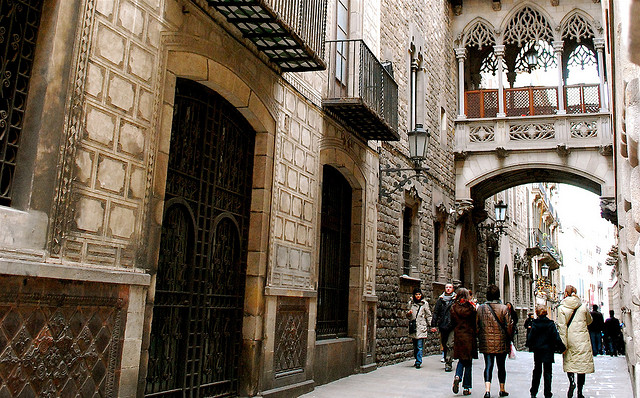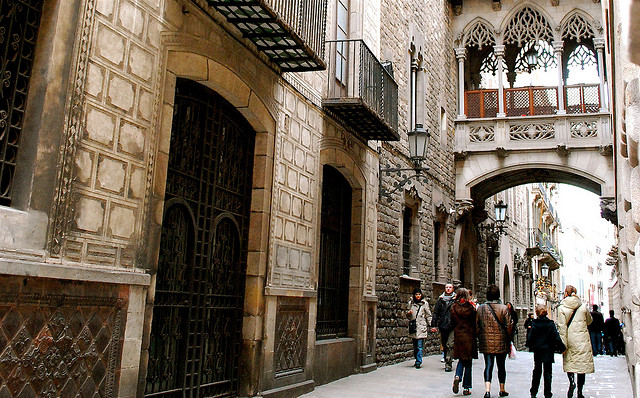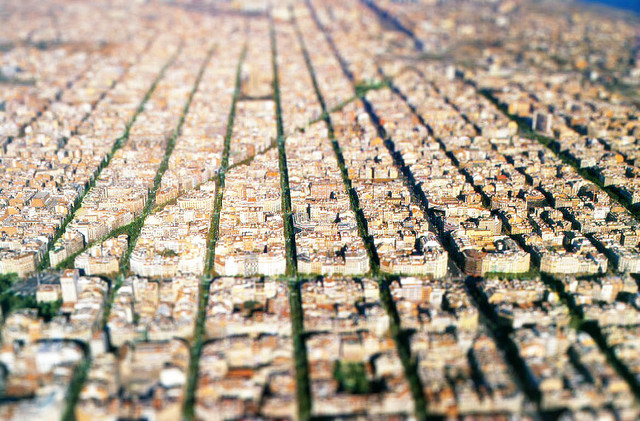Barcelona is one of Spain’s most popular tourist destinations. With a population of more 1.6 million, it is Spain’s second largest city, and is renowned throughout the world as a hub of culture and influence, hosting large scale events in fashion, science, education and entertainment, attracting today’s movers and shakers to make it one of the globe’s major cities.
History
Legends have sprung up around Barcelona’s origins. One tradition has it that the mythological figure of Hercules, he of the Twelve Labors, founded the city, while another attributes its beginnings to the Carthaginian Hamilcar Barca, father of the more famous Hannibal, who would later make such a memorable stand against the Roman invaders.
The old city
The old city of Barcelona, of which the Rambles is the main pedestrian area, is an ideal tourist base and offers the visitors plenty of opportunities to immerse themselves in the varied history of the area.
Barcelona has suffered, or one could say benefited, from a series of invasions. The Romans, Visigoths and Muslims have all left their mark on the city. For example, in the Gothic Quarter (Barri Gotic) of Barcelona, in the main square of Placa del Rei, visitors can get a glimpse of how the Roman colony of Barcino looked. The easily recognizable grid plan that the Romans used to build their towns and cities can be seen in the way the area is laid out, while some of the original Roman walls have been incorporated into the fabric of the cathedral, the Basilica La Seu. The Museu d’Historia de Barcelona located there houses some impressive archaeological finds, including Roman portraits and ceramics.
Moving on a few centuries, the presence of the Catalonian kings can be felt at the impressive remains of the Palau Comtal, the 11th century Count’s Palace, while an exploration of Catalonian history in Barcelona can be made at the Museu d’Arqueologia de Catalunya. Permanent archaeological exhibitions take visitors through Catalonia’s evolution, from the prehistoric era through to the Middle Ages, and give an insight into the different cultures that have influenced the present-day city.
The modern Barcelona
As the city grew in popularity, its population also expanded so that its antique limits were no longer able to contain it. As a result, the modern Eixample neighborhood was built in the late 1800s, complete with wide boulevard-style sidewalks, boutique shops and cafes, and Art Nouveau style.
The Eixample’s Art Nouveau atmosphere soon attracted Modernist artists and no trip to Barcelona could be considered complete without exploring the work of its most famous artistic son, Antoni Gaudi. The Museu d’Historia de Barcelona has been designed to provide a fuller understanding of Gaudi’s work, while the Gaudi Casa-Museu includes furniture designed by Gaudi as well as large collections of his portraits and drawings.
Another famous artist, Picasso is the subject of Barcelona’s most frequently visited museum, the Museu Picasso. Here, the work on display charts the artist’s early years with especial focus on his Blue Period, and continues through to the later work of his Pink Period.
The ideal destination for the cultural enthusiast
Barcelona has proved itself to be the place to visit in Spain for those who want to soak up the diverse culture and history of this part of Europe, and many more places to visit can be found by visiting Barcelona’s tourism guide. The residents understand the huge appeal of their city, and have invested a great deal of time and money in renovating and refurbishing its historic buildings to a high commercial standard, as well as creating brand new hotels, to give their guests a flavor of Barcelona, and so there is plenty of accommodation to suit all budgets available.



Leave a Reply